As an Entrepreneur in Residence (EIR) at a Startup Incubator, you are uniquely positioned to guide budding businesses through the choppy waters of initial growth and investment. The success of these startups—and by extension, your success—hinges on the development of a robust investment strategy. In crafting such a strategy, the goal is to not only secure the necessary funds but also to ensure that the investment yields substantial returns, fostering sustainable growth. This article is designed to provide you with a comprehensive guide on how to create a winning investment strategy for your startup, addressing the common challenge of a lack of investment strategy.
Understanding Investor Expectations
Investors step into the startup realm with well-defined expectations. In the early stages of a startup's life, they typically look for a return of 3 to 5 times their initial investment within a 5 to 7-year period. This high expectation is a reflection of the risk involved; the earlier the investment stage, the higher the uncertainty.
When diving into the numbers, the average return on investment (ROI) for startups hovers around 7-10%. However, it's crucial to take note of sector-specific performance. For instance, the Energy sector boasts an impressive 19.99%, and the Technology sector isn't far behind with a 12.52% average ROI. These statistics underscore the importance of understanding the landscape of your startup's industry and setting realistic, yet ambitious, ROI goals that align with industry benchmarks.
Establishing Your Investment Goals
The internal rate of return (IRR) is another crucial metric that investors use to measure the profitability of their investments. A common target for IRR in startup investments is 25%, which serves as a benchmark for a successful investment. The IRR reflects the efficiency of the investment over time, and achieving this target can be quite compelling for prospective investors.
Angel investors, known for their early-stage funding, typically anticipate an annual return in the 30% to 40% range. On the other hand, venture capitalists, who often come in at slightly later stages and assume a higher degree of risk, might expect even greater returns. As an EIR, it is vital to understand these expectations and prepare startups to meet them.
Crafting Your Investment Strategy
The cornerstone of any successful startup is a well-thought-out investment strategy. This strategy will be the blueprint that guides you in attracting investment and steering your startup towards growth and profitability.
Preliminary Considerations
Before drafting your strategy, it's important to conduct a thorough assessment of your startup's sector. Recognizing that sectors like Energy and Technology have higher average ROIs can influence the direction of your investment approach. This insight can help you position your startup in a way that is attractive to investors looking for higher returns in these fields.
Key Components of an Investment Strategy
Developing an investment strategy that can deliver a 25%–30% annualized IRR across the entire portfolio is essential for investors. This requires careful planning and consideration of various factors such as the timing of the investment, the growth stage of the startups, and the diversification of the portfolio.
Long-term planning is also a critical component. The average investment period in a startup, from investment to exit, typically spans 7-8 years. As an EIR, you must ensure that startups are prepared for this investment timeline and have the patience and strategy in place to navigate through it successfully.
Building the Investment Roadmap
An investment roadmap is a strategic plan that outlines the steps and milestones required to achieve your investment goals. The roadmap should detail the stages of funding, expected returns at each stage, and the metrics that will be used to measure success. A well-constructed roadmap provides clarity and direction, which is reassuring to both startups and investors. Navigating the Funding Lifecycle
Timing investments is paramount when traversing the funding lifecycle of a startup. Early-stage investments, such as those made during the pre-seed and seed phases, carry greater risks but also the potential for higher returns. As startups progress to later funding rounds, the risk profile changes, and so do the expectations of returns. Interestingly, investments made at the Series G and H stages had annualized returns above 80 percent at the six-month close, underscoring the potential for high returns even at later stages.
The Y Combinator (YC) program provides an illustrative case study. Seed-stage YC startup investment returns by year show that even 'modest' years like 2010–2011 produced 70–80% average returns, highlighting the potential profitability of early-stage investments when strategically managed. These insights can be instrumental in crafting a strategy that balances early-stage opportunities with the stability of later-stage investments.
Managing and Growing Investments
After the initial investment, the strategy for managing and growing that investment comes into play. It's a continuous process that involves monitoring the startup's performance, market conditions, and making informed decisions about follow-on investments. The likelihood of making a second investment within an industry increases from 40% to 80% once an investor has already invested in that industry, according to a study by NYU Stern. This statistic suggests that familiarity breeds confidence—and potentially, further investment.
Conclusion
The formation of a winning investment strategy for your startup is a multifaceted endeavor that requires a deep understanding of investor expectations, a clear set of investment goals, and a well-defined roadmap for achieving those goals. As an EIR at a Startup Incubator, you play a critical role in guiding startups towards financial strategies that not only secure funding but also optimize for maximum returns over the long term. By leveraging industry insights and trends, and balancing the investment portfolio to achieve the desired IRR, you can set the startups in your care on a path to sustainable growth and success.
Appendix
Table: Sector-specific Average ROI and IRR Targets
| Sector | Average ROI | Target IRR |
|---|---|---|
| Energy | 19.99% | 25-30% |
| Technology | 12.52% | 25-30% |
| Overall Average | 7-10% | 25-30% |
Additional Resources
For further reading on creating a startup investment strategy and navigating the investment landscape, consider these additional resources:
- "Angel Investing: The Gust Guide to Making Money and Having Fun Investing in Startups" by David S. Rose
- "Venture Deals: Be Smarter Than Your Lawyer and Venture Capitalist" by Brad Feld and Jason Mendelson
- "The Lean Startup: How Today’s Entrepreneurs Use Continuous Innovation to Create Radically Successful Businesses" by Eric Ries
By staying informed and proactive, you can ensure that the startups you work with are well-positioned to attract the right investments and flourish in their respective markets.

